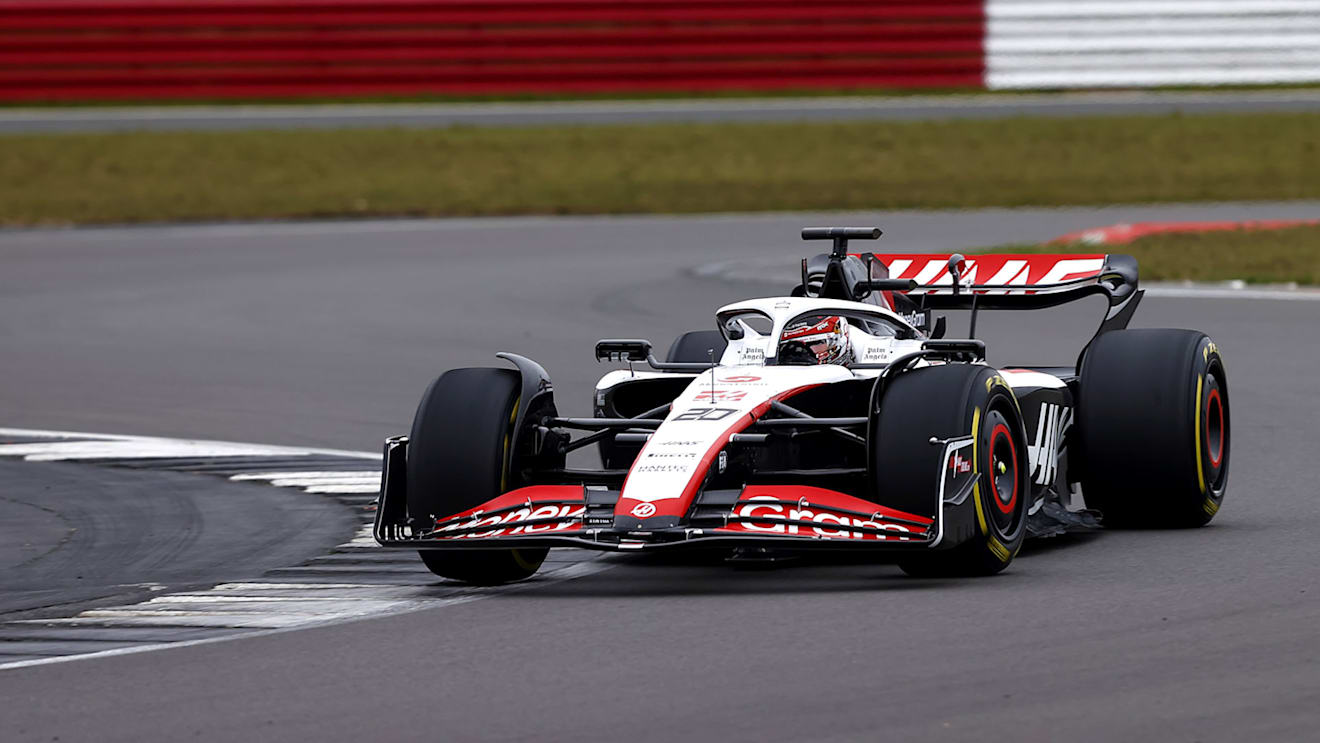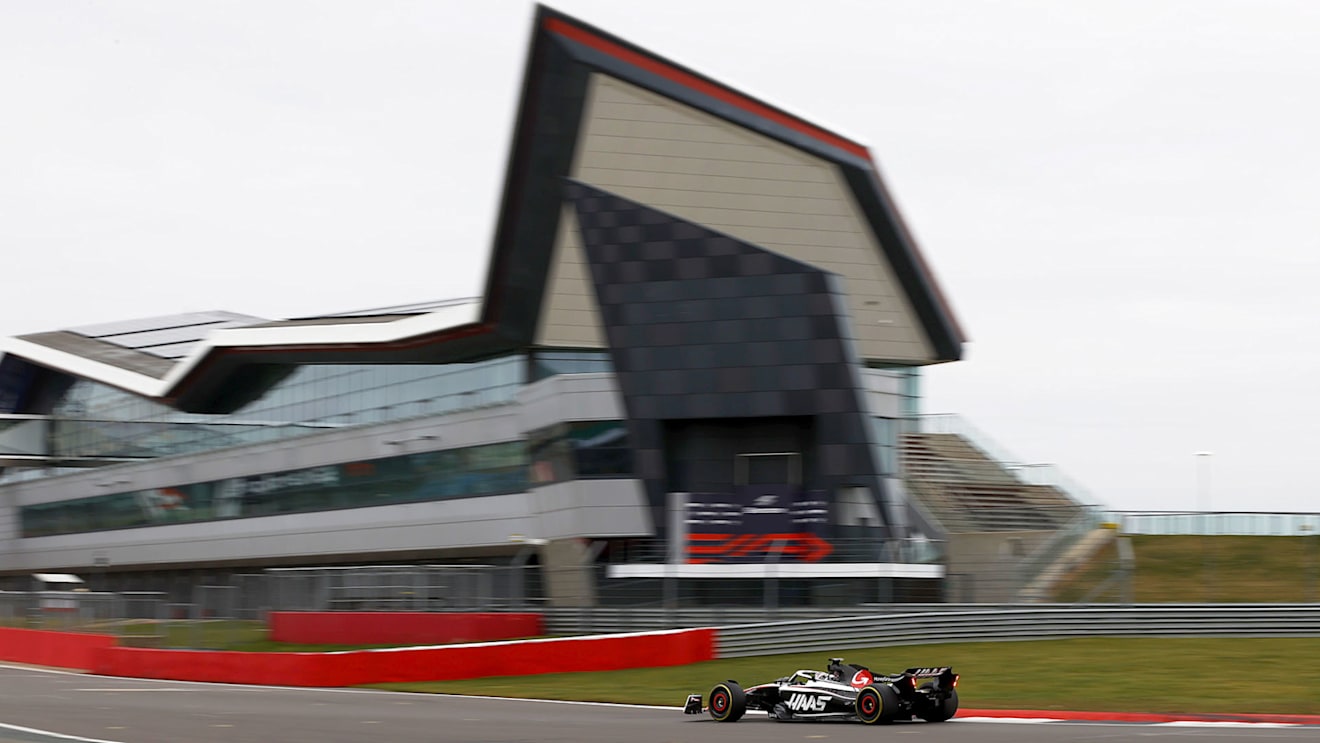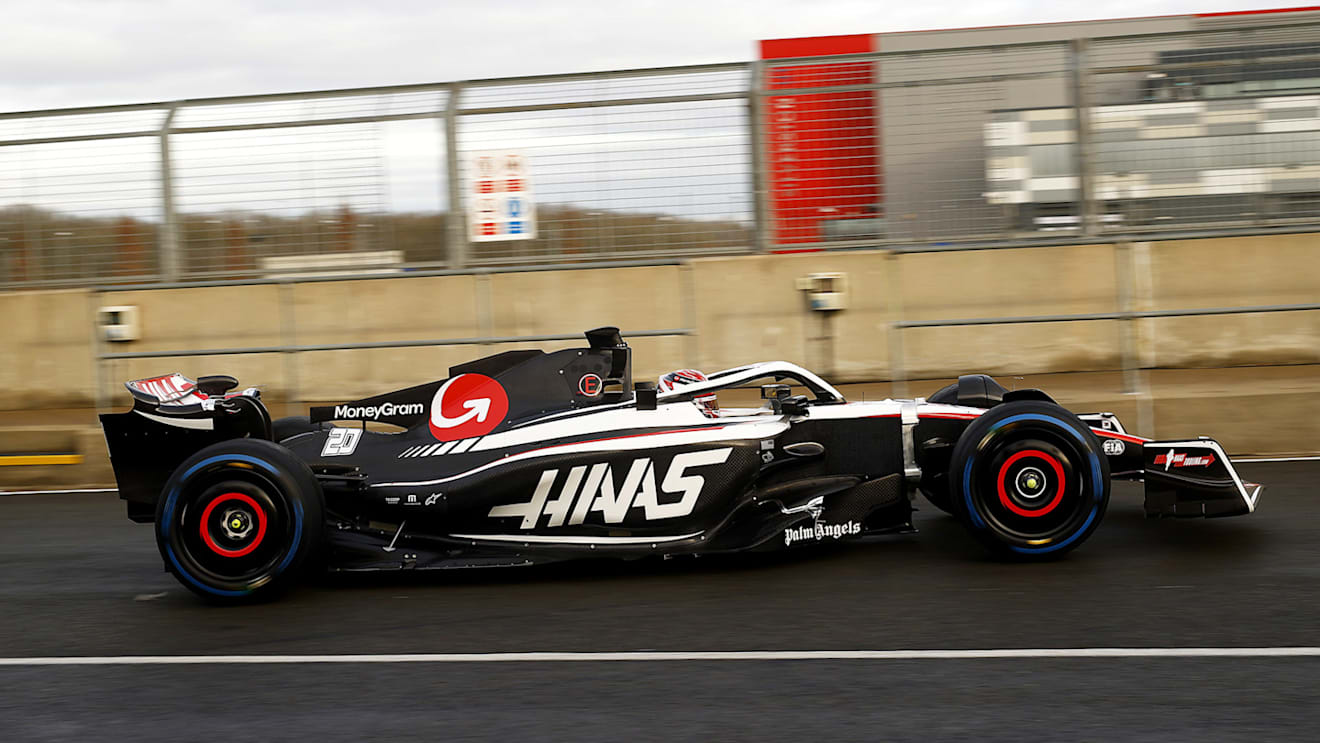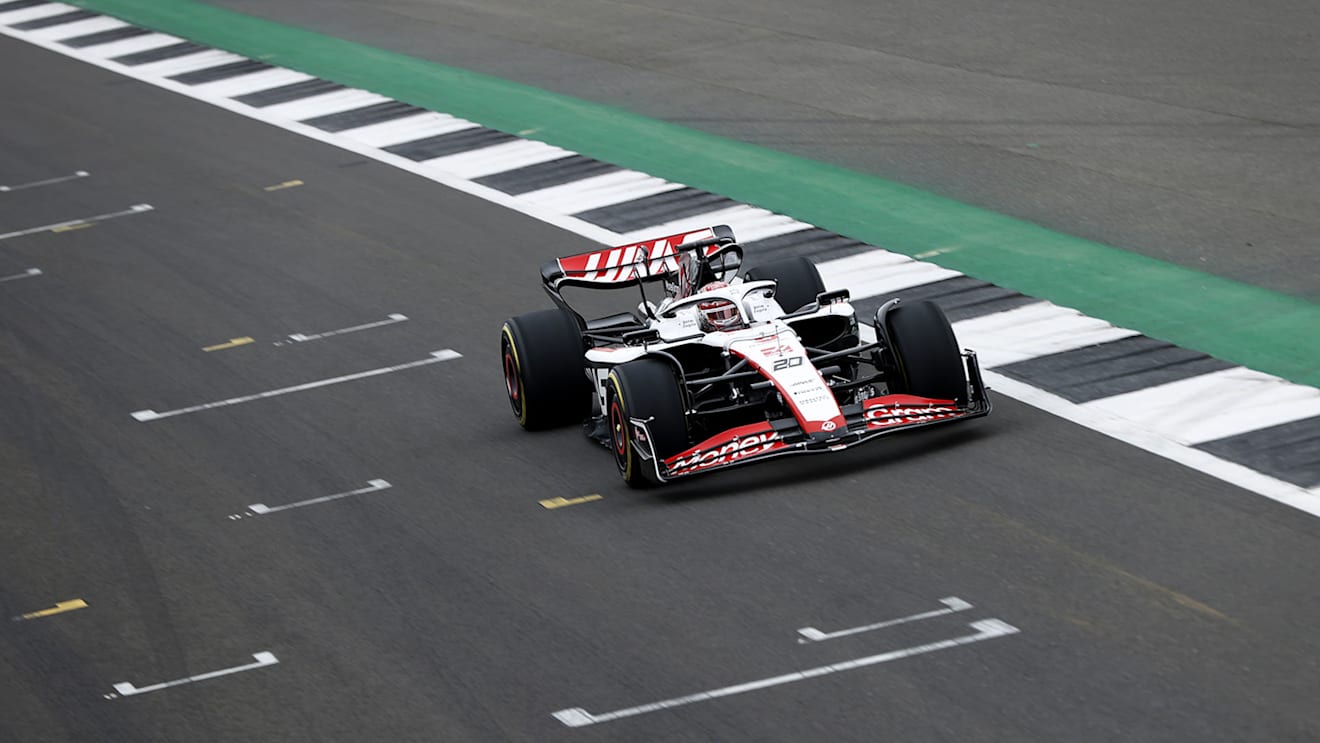1 / 4
Technical
ANALYSIS: The key design features revealed by Haas’s shakedown runs in the VF-23

Haas’s shakedown of their new VF-23 at Silverstone confirmed that the computerised renders the team released a couple of weeks ago were in fact quite representative of the real car.
Within what appears to be an unchanged suspension arrangement (push rod front/pull rod rear) and wheelbase, Haas have revised their whole sidepod/engine cover arrangement, suggesting a similar change to the radiator arrangement as made by the other Ferrari-engined customer team, Alfa Romeo.
READ MORE: Haas show off new VF-23 ahead of Silverstone shakedown
Looking down in plan view, the engine cover behind the cockpit is now wider, suggesting that some of the radiators have been moved back and up. However, the absence of the Alfa’s extra cooling louvres in that area – together with the retention of the VF22’s general sidepod profile shape from side-on, with none of the Red Bull-like bodywork ‘canons’ – suggest Haas’s aerodynamicists have not gone as far as Alfa’s in moving towards a Red Bull architecture.
But the re-assessed cooling layout has enabled a rather different inlet arrangement for the aerodynamically powerful underfloor.

VF-22 (above) and VF-23 (below) showing how much fatter the new car’s engine cover is behind the cockpit and how much slimmer the front of the sidepod area is. Both are suggestive of Haas having moved some radiator area from up front to further back and higher up. Although not shown within this VF-23 render, within the narrower sidepod tops, Haas have introduced the Ferrari-like ‘bathtub’ hollow in which to house the cooling louvres.
A critical part of how well the ground effect underfloors of these cars work is the distance between the front wheels and the inlet to the floor tunnels at the leading lower edge of the sidepod. Last year, many teams found that having the tunnel inlets as far forward as possible, while maximising the tunnel length and therefore the potential maximum downforce, created problems in maintaining a consistent aero balance through the corner.
Some teams found it placed the centre of aerodynamic pressure too far forwards to prevent rear instability on corner entry, and that attempts to tame the rear entry instability could bring mid-corner understeer.
Red Bull seemed to avoid this pitfall partly by having the tunnel inlets quite far back, surrendering theoretical peak downforce for a more rounded aerodynamic operating window that was less ‘on the edge’.
One way of increasing the distance between the front wheels and the tunnel inlets without surrendering tunnel length would be to extend the front axle line forwards, but with Haas – like every team apart from Alfa – already running the maximum permitted wheelbase, this has not been an option.
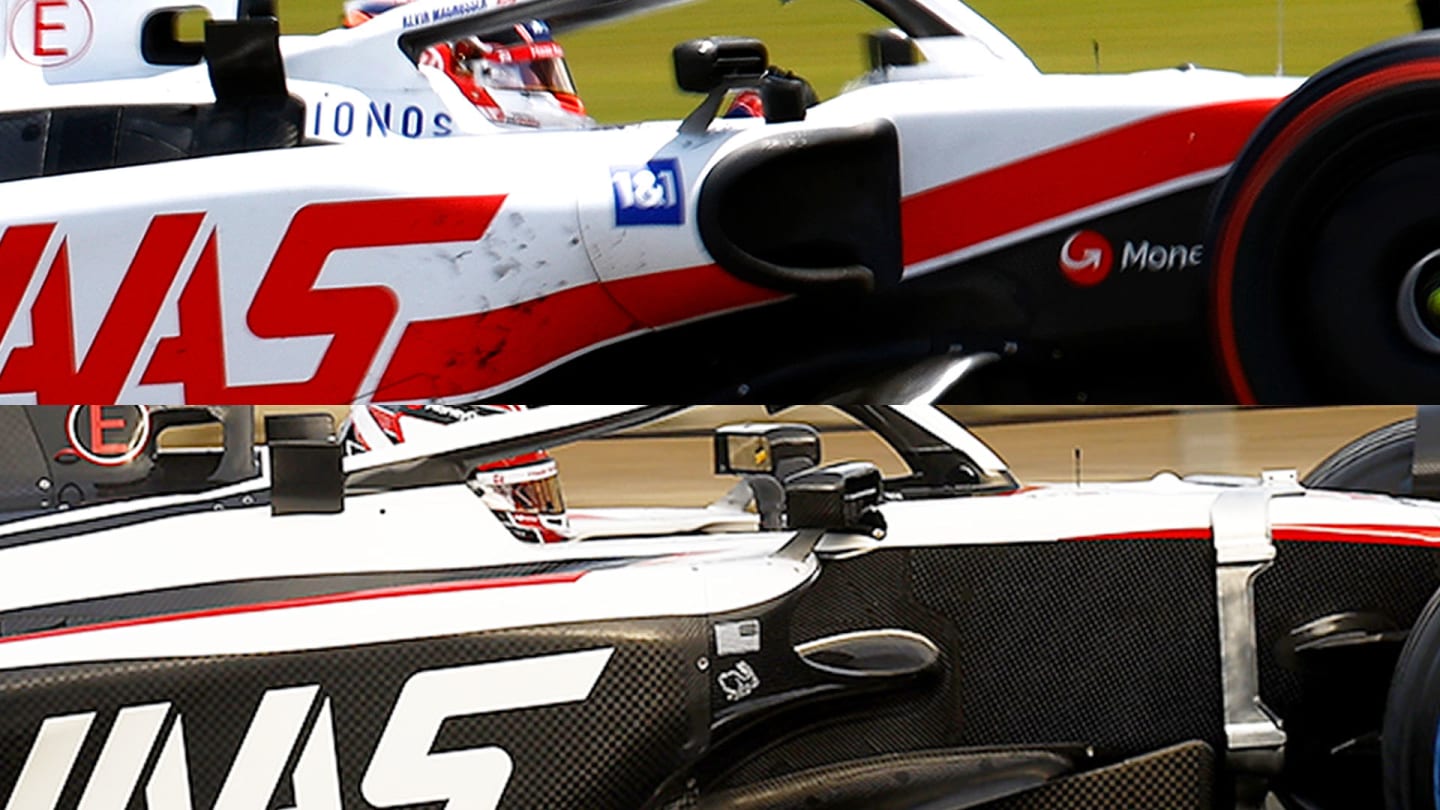
The VF-23’s tunnel inlets and radiator inlets (bottom) appear to be further back than those of last year’s car (top)
From the first images of the VF-23, it would appear that Haas have instead moved their tunnel inlets further back within the chassis. That and the fact that the radiator inlets also appear to be sited mid-cockpit rather than at the front (as they were on the VF-22), suggests that some radiator area has been moved away from the front of the sidepod to make room, further tallying with the fatter top of the engine cover.
ANALYSIS: What we learned from a first look at the brand-new Alfa Romeo C43
The fatter engine cover and slimmer sidepod fronts have created a more channelled area for the sidepod tops, and within there Haas have introduced the Ferrari-like ‘bathtub’ hollow in which the cooling louvres are situated.
It seems that the extra cooling capacity created by this feature has accommodated the moving of some of the radiator upwards around the car’s centre line. This in turn could by why Haas have not found it necessary to go with the Red Bull-like rear-end cooling solution adopted by Alfa Romeo on their new C43.
YOU MIGHT ALSO LIKE
Report F2: Verschoor makes last-lap pass for Jeddah Feature Race win
FeatureF1 Unlocked POWER RANKINGS: Who lit up the streets of Jeddah during the Saudi Arabian GP weekend?
News Tsunoda labels collision with Gasly ‘a great shame’ after Red Bull racer misses out on vital learning in Saudi Arabian GP
Report Piastri clinches victory in Saudi Arabia from Verstappen and Leclerc as McLaren driver becomes new championship leader

